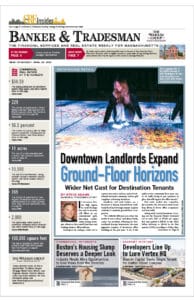Consumer spending rebounded in May and new applications for unemployment benefits fell last week, suggesting the economy remained on a moderate growth path.
While other data on Thursday showed contracts to buy previously owned homes approached a 6.5 year high in May, the data taken together suggested economic activity would probably remain lukewarm and discourage the Federal Reserve from scaling back its monetary stimulus anytime soon.
"It’s still a picture of better growth, but there is little to suggest that we are going to get the kind of break-out growth that would entail a tighter environment from policymakers in the near future," said Brian Levitt, an economist at OppenheimerFunds in New York.
The Fed said last week that downside economic risks had waned and it could start pulling back on the pace of its monthly bond purchases this year.
Consumer spending, which accounts for more than two-thirds of U.S. economic activity, increased 0.3 percent last month, reversing April’s 0.3 percent drop, the Commerce Department said.
When adjusted for inflation, spending rose 0.2 percent. However, real spending for April was revised lower to the first contraction in six months, suggesting second-quarter economic growth could come in a bit weaker than economists had expected.
Barclays cut its GDP growth forecast by 0.4 percentage point to a 1.4 percent pace. Goldman Sachs pared its forecast by a tenth of a point to 1.7 percent, while Morgan Stanley trimmed its estimate to 1.5 percent from 1.6 percent.
The economy expanded at a sluggish 1.8 percent rate in the first three months of the year.
In one bright sign, Winnebago Industries Inc reported that its profit nearly doubled in the quarter that ended June 1 as sales of motor homes jumped 55 percent and sales of trailers rose 10 percent.
Separately, the Labor Department said initial claims for unemployment benefits fell 9,000 last week to a seasonally adjusted 346,000. A four-week moving average that irons out week-to-week volatility fell 2,750 to 345,750.
The report signaled little change in the pace of job growth, which has averaged 189,000 jobs per month so far this year.
"It appears that the underlying pace of layoffs remained stable during June. The other half of the employment equation, hiring, also likely held steady," said Guy Berger, an economist at RBS in Stamford, Connecticut.
DATA TONE IMPROVING
Stocks on Wall Street rose on the data, putting the broader Standard & Poor’s 500 index on track for a third straight day of gains. The dollar gained broadly and prices for U.S. Treasury debt pushed higher.
U.S. stocks and government bonds had sold off in the wake of the Fed’s comments last week, and several officials at the central bank have since sought to push against market fears of an imminent stop to their bond buying program. The Fed has been purchasing $85 billion in bonds each month in an effort to keep borrowing costs down and spur stronger growth.
"If labor market conditions and the economy’s growth momentum were to be less favorable than in the (Fed’s) outlook – and this is what has happened in recent years – I would expect that the asset purchases would continue at a higher pace for longer," New York Federal Reserve Bank President William Dudley said on Thursday.
A range of recent data, including reports on regional factory activity, business spending plans and consumer confidence, have pointed to an economy that is regaining its footing after stumbling early in the second quarter.
A big part of that stabilization is due to the strengthening housing recovery.
The National Association of Realtors said its Pending Home Sales Index, based on contracts signed in May, increased 6.7 percent to 112.3 – the highest level since December 2006.
While part of the jump in pending sales reflected a rush by buyers to lock in deals before mortgage rates climbed higher, it also signaled underlying strength.
House price gains have helped buoy consumer spending in the face of higher taxes and tepid income growth.
Income, however, grew 0.5 percent last month, the largest gain since February, after nudging up 0.1 percent in April, the Commerce Department report showed. The gain helped lift the saving rate to a five-month high of 3.2 percent.
"That sets up for a little bit of progress in the third quarter," said Bruce McCain, chief investment strategist at Key Private Bank in Cleveland, Ohio.
The report also showed a bit of inflation in the economy, pointing to some pick-up in demand.
A price index for consumer spending inched up 0.1 percent in May after declining two straight months, and a core reading that strips out food and energy costs also rose 0.1 percent after being flat in April.
Over the past 12 months, inflation increased 1 percent, well below the Fed’s 2 percent target but up from 0.7 percent in the period through April.
Core prices were up 1.1 percent from a year ago, the same as in April. While that suggested some stabilization after a long period of disinflation, it matched a record low reached only a few times since the series started in 1960.






